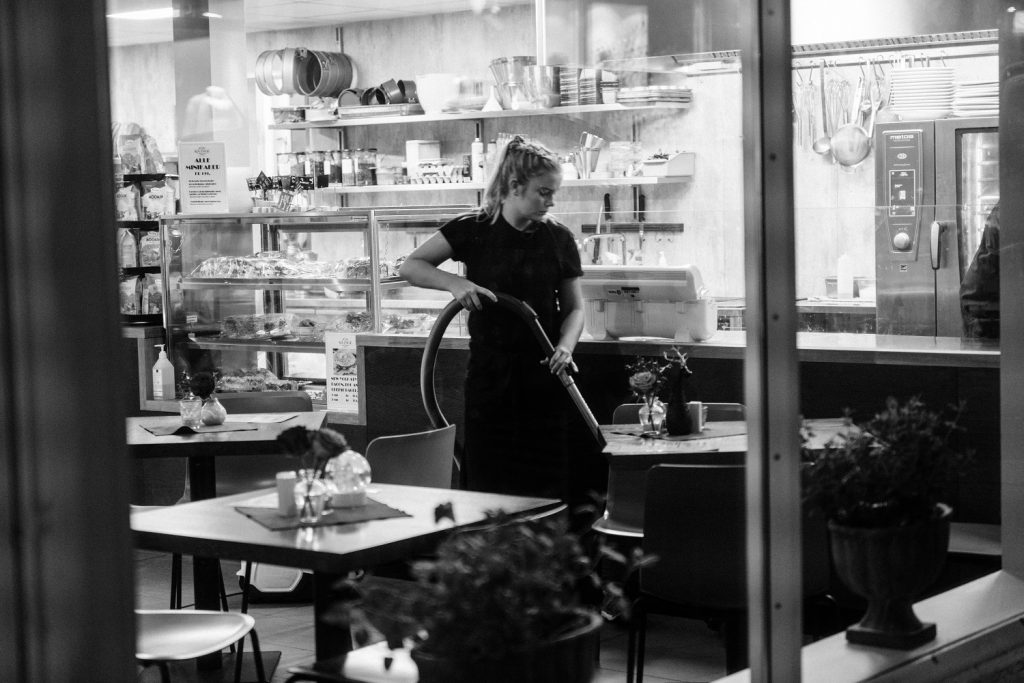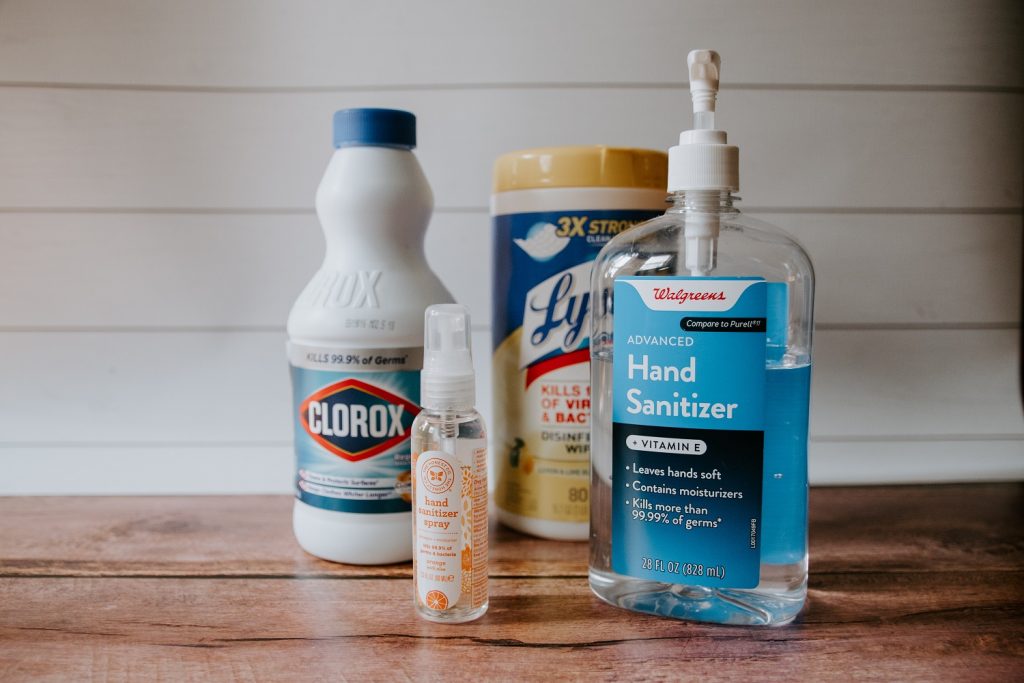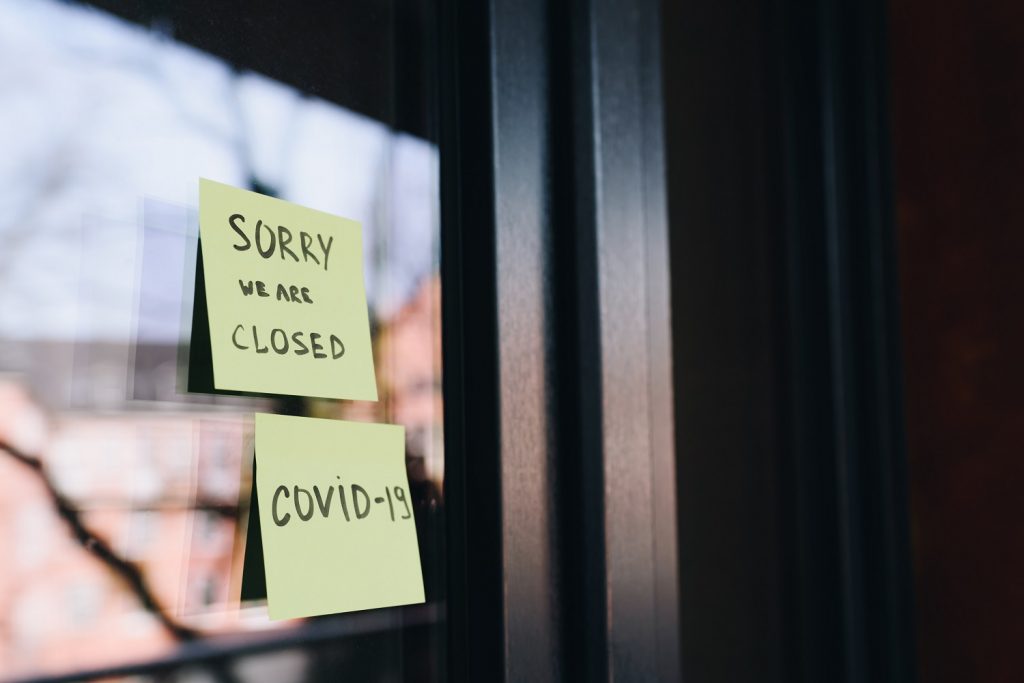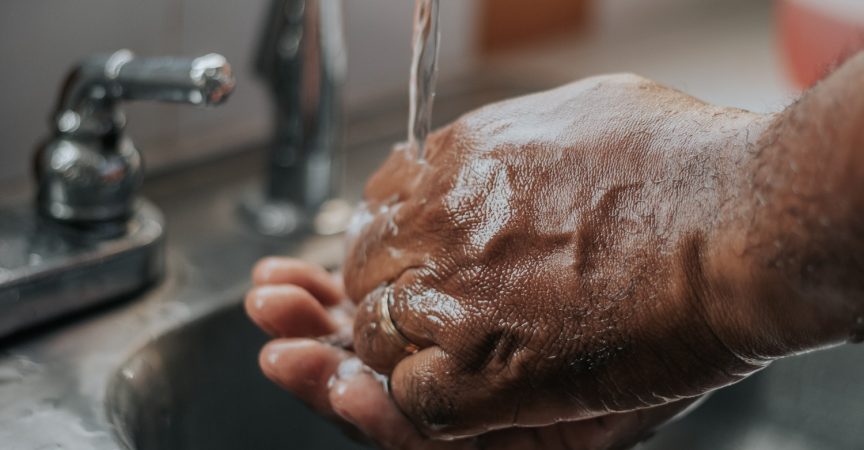COVID-19 Health and Safety Protocols and Procedures for Reopening Restaurants
Across Canada, restaurants have already reopened or are preparing to reopen. They’re unlocking the doors, setting up patios, and calling staff back into work. While this presents a new set of challenges (such as supply chain issues or possible labour shortages), it’s also changed the way that establishments are currently operating, and will operate in the future.
Major adjustments will need to be implemented specifically to the health and safety protocols and practices in restaurants for reopening. During lockdown, as restaurants shuttered their doors temporarily (or unfortunately permanently), cleaning protocols were discussed and developed to accommodate. However, as restaurants reopen and employees and guests return, these cleaning procedures need to be reviewed, and in some cases updated.
To understand what restaurants need to know, and put into practice, when it comes to health and safety, we reached out to Jim Gauthier, Senior Clinical Advisor, Infection Prevention at Diversey.
What are the cleaning protocols to put in place for reopening?
Everyone is much more aware of our environment with the emergence of SARS-CoV-2. Commonly touched surfaces, or high touch surfaces, such as key pads, touch screens, tables, menus, knobs and handles will come under scrutiny.
Storage areas that have sat empty for months will need attention. This would include dry storage and refrigerators/freezers. Expiry dates on any product left on the premises will need to be determined, with the disposition of the outdated products.
Before opening, survey the premises for water intrusion, or evidence of an infestation with vermin (mice, rats, insects). Water intrusion will leave mold within a premise and will need professional attention for proper remediation. Depending on the evidence of vermin, again, a professional will need to be consulted concerning eradication and cleaning. Stagnant water will need to be removed by flushing, your local Public Health will be able to advise on flushing of these lines.
A good, general cleaning will be required, to remove accumulated dust, possibly followed by the disinfection of the high touch surfaces. Use of a one-step cleaner/disinfectant can be used, which should have a Drug Identification Number (DIN), indicating that the cleaner/disinfectant has been registered with Health Canada.

What are the key touchpoints in a restaurant that operators should focus on?
This will vary slightly by jurisdiction. The Public Health Agency of Canada suggests doorknobs, handrails, elevator buttons, light switches, cabinet handles, faucet handles, tables, countertops, and electronics.
Ontario’s Ministry of Health recommendations include doorknobs, handrails, light switches, toilet handles, tabletops, counters, touch screen surfaces, chairs, food contact surfaces, meal trays and kitchen and buffet serving utensils. British Columbia’s Fraser Health recommends doorknobs, faucets, payment card touchpads, bathroom surfaces, menus, and condiments. Each facility should determine its high-touch surfaces and focus on more frequent (at least twice daily) cleaning and disinfection.
What is proper hand hygiene?
Hand hygiene can refer to either washing with soap and water, or to the use of alcohol-based hand rub (hand sanitizer). Hand washing removes soil, microorganisms, dead skin, and natural oils, so if frequent hand washing is indicated, a good hand lotion would be indicated to keep hands from drying out. Hand sanitizer kills microorganisms but does not remove soil, dead skin nor natural oils, so it is actually less harsh on the skin than soap and water.
If hands are visibly soiled, hand washing would consist of:
- Wet hands with warm water
- Apply soap (regular, non-medicated soap is fine)
- Lather all surfaces of both hands, paying particular attention to tips of fingers, back of both hands, the base of thumbs. Lathering should be done for at least 20 seconds
- Rinse under running water
- Pat hands dry with a paper towel and use a paper towel to turn off taps
- Use a paper towel to open the door (if present) to avoid re-contaminating hands
If hands are not visibly soiled, and operating procedure will allow the use of hand sanitizer:
- Apply at least 1mL of sanitizer to the palm
- Rub briskly over all surfaces of hands, paying attention to tips of fingers, back of both hands, and base of thumbs
- Hands should appear wet for at least 20 seconds, to allow sufficient contact time for the hand sanitizer to kill microorganisms

What cleaning products do you recommend?
The use of a one-step cleaner/disinfectant is recommended on visibly clean surfaces. Any soiled surface needs to be cleaned first, then the disinfectant used. A product with a short contact time (one minute) allows quick cleaning and disinfection, longer contact time products (up to 10 minutes) will require re-application to achieve the total wet contact time
Recommendations are to use a DIN registered product. If disinfecting food contact surfaces, the surface must always be cleaned first with a detergent, followed by a rinse, followed by the disinfectant with the appropriate contact time, followed by a rinse, and then followed by a no-rinse food contact sanitizer. For non-food contact surfaces, the one-step product will clean and disinfect. The wet contact time must be followed to ensure disinfection.
What are the proper cleaning protocols if/when an employee gets sick?
If the employee was symptomatic while at work (cough, fever, sneezing), and is then found to be positive for COVID-19, the recommendations are to disinfect areas where the employee had been working.
If the employee was working near a food contact surface, these surfaces will require disinfection in addition to sanitization. Common areas where the employee may have been (lunchroom) should also be cleaned and disinfected. Consultation with local Public Health is advised for the most current recommendations.

If an employee tests positive for COVID-19, do I have to close? For how long?
This would be determined in consultation with local Public Health. There are many factors involved:
- Did the employee wear a mask as part of their duties (which would limit the amount of contamination of surfaces and other people)?
- Did anyone have face to face contact with the employee for more than 15 cumulative minutes (as that is the ‘designated’ time for a ‘contact’)?
- Was the employee coughing or sneezing or talking loudly during their shift (as this determines how much environmental contamination would occur)?
- Are higher-touch surfaces being cleaned and disinfected regularly?
At this point, I cannot find any one reference that would indicate that the business would have to shut down. With so many factors, it is best to consult with the Public Health authority.
What are the cleaning procedures for patio spaces?
The patio would be treated like an indoor environment in terms of cleaning and sanitizing tables after each use. Again, local Public Health will offer suggestions based on local transmission risks.










1 Comments